- Joined
- May 6, 2019
- Messages
- 13,407
- Points
- 113
EA has shared a partial list of system requirements for Motive's new Dead Space remake on Steam, and they have been described by some as "scary."
Go to post
Go to post
Yeah I wouldn't call it scary either. I'm sure my 3700x and 3070 Strix will do just fine for my humble 1440 setup.I wouldn’t call that scary for requirements. Scary would be a recommended system with a Ryzen 7900X w/ 64gb ram and 1TB nvme storage. A last gen low end part isn’t really a big deal.
Mid range last gen? Is there a model lower than the 5600? I know there are APUs, but Even there I thought the performance per core was equal to the 5600, and they just included a GPU.Specs don't seem scary at all. By the time the game launches the recommended specs will be mid range last gen AMD hardware, and 2 gen old mid range Intel hardware. This doesn't stand out at all.
It feels too soon for a remake of this game. I mean, it only just came out in 2008, which in the grand scheme of things was like yesterday.
Either way, this game won't be one I will be playing. I haven't played any in the series and won't be touching this one either. I don't do 3rd person. I almost quit Far Cry 6 when it briefly went 3rd person in camps. I simply do not do that ****.
When I finally replaced my 2600k to go 7700k years ago I doubled the performance of the 1070 I had in it. So yea I think that is to be expected after a few generations that the IPC and I/O uplift is needed.We'll see how this pans out but I recently saw how my old 4930K (@4.3 GHz) still managed to be a significant source of bottlenecks for Spider-Man remastered. Ultimately I couldn't even enable RT with it. It barely manages 60 FPS/4K with a 3090 TI while the newer modern rig is pushing 90-110 FPS with a similar, but slightly faster, card. There are a bunch of other differences(SATA III SSD-2133 MHz DDR3, older instruction sets/chipsets) but it was a good indicator of how we're getting to the point that a demanding game will need a newer platform.
I think they're doing a roundabout way of saying you need a DDR4/DDR5-PCIe 4.0/5.0 with a moderately fast nvme and a CPU-motherboard that won't bottleneck either mem or drive plus a mid-high GPU. I'd say that we're not only past quad cores now but also getting past those older platforms as well. I'm sure less demanding games will be happy on them for some time to come though.
Mid range last gen? Is there a model lower than the 5600? I know there are APUs, but Even there I thought the performance per core was equal to the 5600, and they just included a GPU.
As for 3rd person, agree 100%
Mid range last gen? Is there a model lower than the 5600? I know there are APUs, but Even there I thought the performance per core was equal to the 5600, and they just included a GPU.

I think the 2 ecosystems will be around for quite a while longer but I often wonder about this too and I agree about the prices. I still remember how with every gen of GPU for the last 5-10 years now I've heard someone complain about what they used to pay. Before scalpers, miners, and the pandemic, this was happening even if it wasn't as extreme. Now we have the rest of the builds going through similar price jumps (albeit not as extreme in most cases) and it is an expensive hobby. I remember how it was a pleasurable challenge at one point to make the $1K build that could do a lot. Now $1K basically gets you in the door with console-level performance.I'm interested to see whether the newer games coming out will push more PC gamers to consoles, where one is (at least in theory) guaranteed n years of platform support without having to worry about hardware and software compatibility issues. The cost of a decent PC for gaming has skyrocketed in recent years, and not only because of GPU prices.
Imo if you got a better CPU then the minimum recomended you should be fine, it's the GPU that might cause more issues.
I miss 16:10 sooooooooooooooooooooooo much. Gawd do I miss it.Before that I was at 2560x1600 since 2010.
And before that at 1920x1200 since 2005.
We have a lot of similarities with those timelines and resolutions. Not exactly the same but pretty darn close. I totally agree with the ridiculous refresh rate dragons so many are chasing these days. I've got displays in the house ranging from 120, 144, and 200 Hz, and can honestly say I'm happy at 120.That is certainly always the case for me, but I have been playing my games at 4k since 2015.
Before that I was at 2560x1600 since 2010.
And before that at 1920x1200 since 2005.
With the exception of like two years in 2008-2010 and another two years from 2013-2015 I've pretty much been seriously GPU limited for 17 years
But so many kids these days feel like they aren't getting the full gaming experience unless they are maxing out their 165hz monitors, (which is ridiculous by the way) which often shifts the bottleneck to the CPU again...
Luckily I don't have that problem, which is why I could use my 6C/12T Sandy Bridge-E i7-3930k from 2011 until 2019, and my current Zen2 Threadripper 3960x is likely to be with me for a while.
I've been horrible with that since the 1080 Ti. I upgraded every GPU gen since and even did the step up to get to a 3090 Ti and double dipped for the Hybrid. I'm glad it's all paid off but I have no intention of a new GPU with ADA (although the rumored specs sound impressive). At this point my eyes are on the horizon for a new build so I can retire the 4930K rig. I'm honestly seeing some significant bottlenecks at 4K with max RT settings now. I know it's hard to believe but even 4K 60Hz can now have issues with max ray tracing effects in games for older CPUs. I'm guessing there must be some extra workload on prepping those frames with all the extra RT calculations. I'm even limiting frames, lol, to help it out a bit.Yea I'm going to ride my 5900x at least through this generation... I MIGHT get a new video card again though... sigh... I'm hopeless. lol.
I've got a Samsung 25" 1920x1200 monitor that I repurposed for work. I can't remember the model # but we picked it up around 2006-2008 during BF at BB. I was looking for a smaller flatscreen for the bedroom and gaming and came across it in the monitor section. It was cheaper and better than the Samsung TVs at the time and was actually marketed as a monitor with a built-in tv tuner (had VGA, DVI-D, and multiple HDMI ports). It was the last display my old P4 rig was ever used with. Some fun times with that thing but now it's helping my old eyes with the hours I have to spend on website portals and databases for the day job.I miss 16:10 sooooooooooooooooooooooo much. Gawd do I miss it.
I’m still using my 2005 1920x1200 SyncMaster 2443bwx. 1920x1200 is the largest supported resolution on my dock for non primary displays, and I love having the extra vertical space for a monitor used for email / slack.We have a lot of similarities with those timelines and resolutions. Not exactly the same but pretty darn close. I totally agree with the ridiculous refresh rate dragons so many are chasing these days. I've got displays in the house ranging from 120, 144, and 200 Hz, and can honestly say I'm happy at 120.
I've been horrible with that since the 1080 Ti. I upgraded every GPU gen since and even did the step up to get to a 3090 Ti and double dipped for the Hybrid. I'm glad it's all paid off but I have no intention of a new GPU with ADA (although the rumored specs sound impressive). At this point my eyes are on the horizon for a new build so I can retire the 4930K rig. I'm honestly seeing some significant bottlenecks at 4K with max RT settings now. I know it's hard to believe but even 4K 60Hz can now have issues with max ray tracing effects in games for older CPUs. I'm guessing there must be some extra workload on prepping those frames with all the extra RT calculations. I'm even limiting frames, lol, to help it out a bit.
I've got a Samsung 25" 1920x1200 monitor that I repurposed for work. I can't remember the model # but we picked it up around 2006-2008 during BF at BB. I was looking for a smaller flatscreen for the bedroom and gaming and came across it in the monitor section. It was cheaper and better than the Samsung TVs at the time and was actually marketed as a monitor with a built-in tv tuner (had VGA, DVI-D, and multiple HDMI ports). It was the last display my old P4 rig was ever used with. Some fun times with that thing but now it's helping my old eyes with the hours I have to spend on website portals and databases for the day job.
I miss 16:10 sooooooooooooooooooooooo much. Gawd do I miss it.
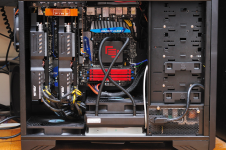
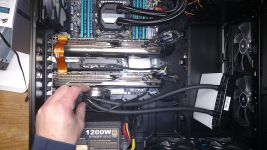
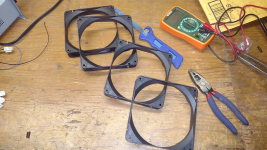
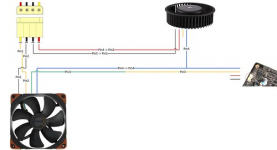
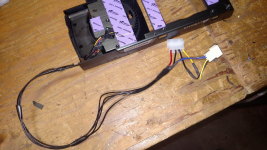

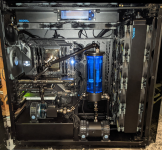
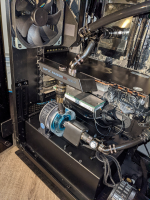
I'm at work right now and sitting in front of it and it is SyncMaster.I’m still using my 2005 1920x1200 SyncMaster 2443bwx. 1920x1200 is the largest supported resolution on my dock for non primary displays, and I love having the extra vertical space for a monitor used for email / slack.
